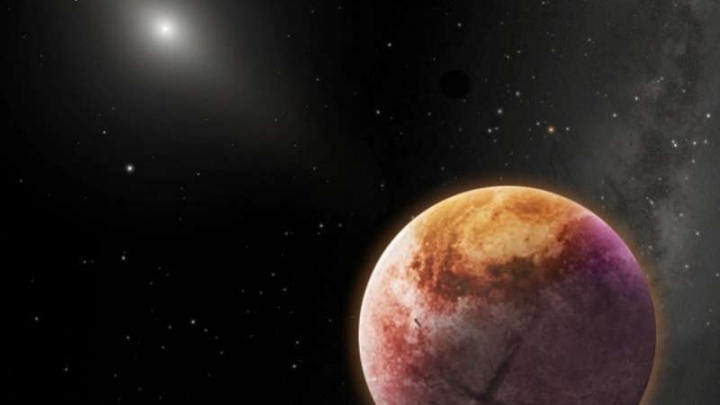Hunt for ninth planet reveals new extremely distant solar system objects

In the race to discover a proposed ninth planet in our Solar System, Carnegie's Scott Sheppard and Chadwick Trujillo of Northern Arizona University have observed several never-before-seen objects at extreme distances from the Sun in our Solar System. Sheppard and Trujillo have now submitted their latest discoveries to the International Astronomical Union's Minor Planet Center for official designations. A paper about the discoveries has also been accepted to The Astronomical Journal.
The more objects that are found at extreme distances, the better the chance of constraining the location of the ninth planet that Sheppard and Trujillo first predicted to exist far beyond Pluto (itself no longer classified as a planet) in 2014. The placement and orbits of small, so-called extreme trans-Neptunian objects, can help narrow down the size and distance from the Sun of the predicted ninth planet, because that planet's gravity influences the movements of the smaller objects that are far beyond Neptune. The objects are called trans-Neptunian because their orbits around the Sun are greater than Neptune's.
In 2014, Sheppard and Trujillo announced the discovery of 2012 VP113 (nicknamed "Biden"), which has the most-distant known orbit in our Solar System. At this time, Sheppard and Trujillo also noticed that the handful of known extreme trans-Neptunian objects all cluster with similar orbital angles. This lead them to predict that there is a planet at more than 200 times our distance from the Sun. Its mass, ranging in possibility from several Earths to a Neptune equivalent, is shepherding these smaller objects into similar types of orbits.
Some have called this Planet X or Planet 9. Further work since 2014 showed that this massive ninth planet likely exists by further constraining its possible properties. Analysis of "neighboring" small body orbits suggest that it is several times more massive than the Earth, possibly as much as 15 times more so, and at the closest point of its extremely stretched, oblong orbit it is at least 200 times farther away from the Sun than Earth. (This is over 5 times more distant than Pluto.)
You can read more at Phys.org